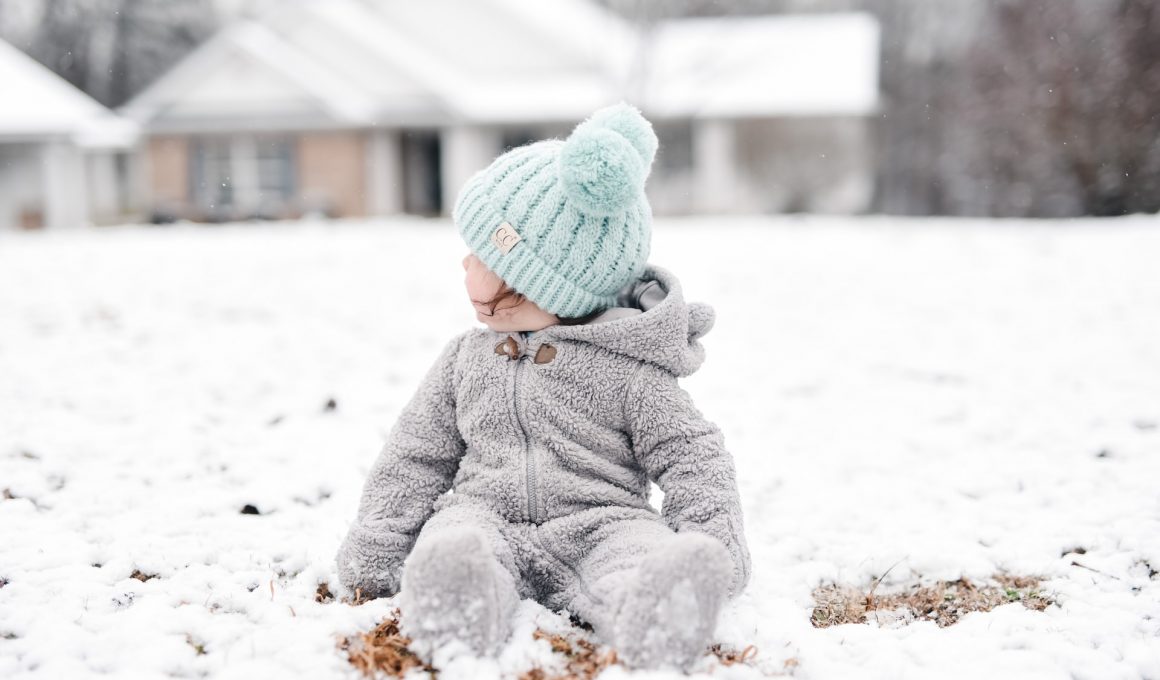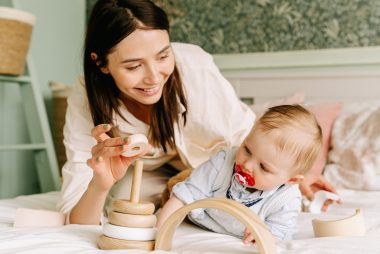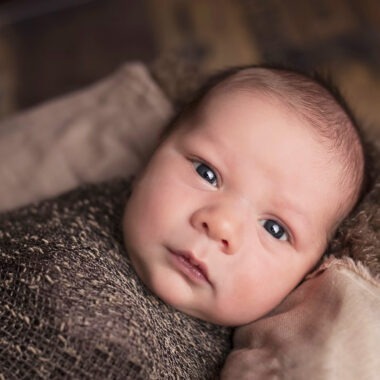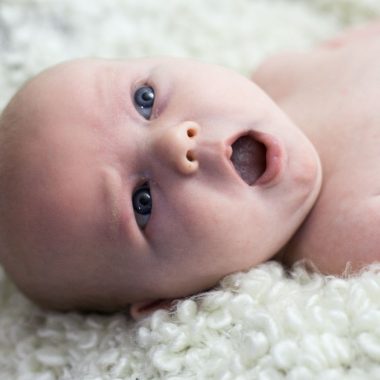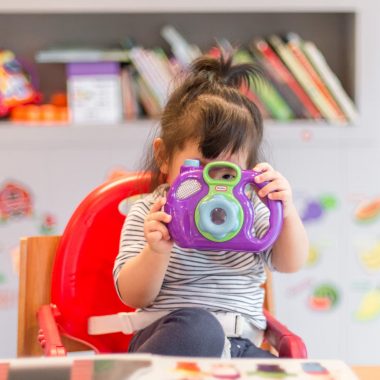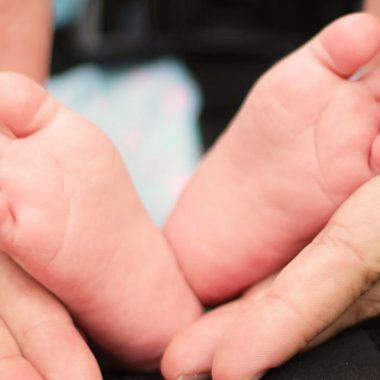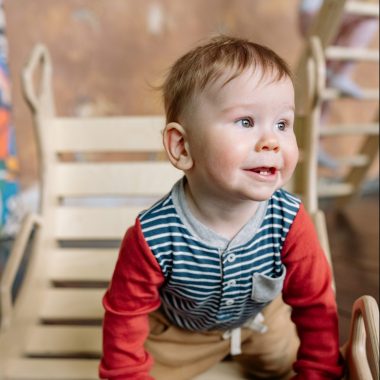Winters are harsh and require just that much extra care to stay healthy. Avoiding sickness during the winter can be challenging.
Caring for babies during the colder winter months is even more challenging.
Babies require extra care and support in the winter since their immune system is not fully developed at birth. The immune system gets stronger as the baby gets older. This is why a baby will be more susceptible to catching colds and infections during winter.
By taking preventive measures, you can make sure your baby stays warm and safe throughout the winter months.
So what does baby care in winter look like?
Why Is It Important to Take Care of a Baby During Winter?
Spending winter with a newborn is tough. Babies need extra care during the winter.
Lower temperatures trigger various processes within the body to help keep it safe.
Most of the energy is used to maintain the body temperature appropriately, diverting it from being used for other purposes.
When this occurs, the body’s immunity levels might be adversely affected.
During winters, microbes and viruses thrive and latch onto hosts. With decreased immunity, babies become an easy target for diseases.
And so their chances of contracting illnesses increases.
READ MORE: Recognizing Newborn Illness with Cough & Cry Analysis
Effects of Cold Weather On Babies
Babies and children under five years of age are particularly vulnerable to the effects of cold weather.
The cold weather may affect your baby even more strongly if it’s their first winter.
Here are some tidbits about baby care in winter that you should know:
- When a baby is cold, they will feel uncomfortable. A baby will express discomfort by crying or emitting other irritable sounds. If your baby gets fussy, check their body temperature to detect spikes or drops.
- Babies have lesser muscle mass than adults. This is why a baby is at greater risk of developing hypothermia. Signs of hypothermia include shivering, slower breathing, and cold, pale skin.
- Healthy babies who are on track with their development can easily maintain their normal body temperature. But if your baby is sick or the weather is very cold, you must ensure they are dressed warmly.
- A baby loses body heat from their head and face. Putting a hat on your baby’s head is a good way to help them maintain body warmth. Keep in mind that warm clothing can also cause a baby to overheat. To avoid that, please check your baby’s body temperature regularly.
- Always take off the hat when your baby is asleep to keep them safe and avoid SIDS.
- Frostbite is another condition caused by extreme cold. The skin essentially freezes when someone is exposed to extreme cold for too long. Extremities like fingers, toes, noses, and ears are most likely to get frostbitten. The skin may burn, feel prickly, or even go numb. The affected skin could look waxy, red, whiteish, or gray and sometimes may blister.
READ MORE: Sudden Infant Death Syndrome: Causes, Risk Factors and Prevention
How Do I Know If My Baby Is Feeling Cold?
Your baby’s hands and face are the first to feel cold. But this is not an accurate reflection of their body temperature.
The best and easiest way to tell if your baby is cold is by feeling the skin on their tummy and back. If their tummy or back is cold, your baby is feeling cold.
Also, your baby’s behavior might give you insight into how comfortable they feel. If a baby is comfortable, they will be:
- happy
- active
- feeding well
- sleeping well
What Is A Baby’s Normal Body Temperature?
A baby’s normal temperature can range from 97 to 100.3 degrees Fahrenheit. Doctors consider a rectal temperature of 100.4 F or higher indicative of a fever.
You can take your baby’s temperature in different ways, such as through the rectum, mouth, ear, under the arm, or at the temple.
Rectal thermometers provide the most accurate temperature readings and can be the easiest to use with an infant.
If your baby’s body temperature is under 97 Fahrenheit, this means that your baby is cold. Before consulting your pediatrician, you can do the following:
- Increase ambient temperature
- Dress your baby with more layers and check their temperature again
Which Viral Infections Mostly Affect Babies In Winter?
Viruses love cold weather. They spread faster and are more stable in lower temperatures.
Cold weather affects the body’s immune system as it wears down defenses against infections.
In winter, without much sunlight, the body runs low on Vitamin D – an important aid in powering the body’s immune system. This makes the body more vulnerable to viruses and diseases.
Some of the most common viral infections that affect babies in winter are:
- Influenza
- Bronchiolitis
- Croup
- Rhinovirus
What Are The Symptoms Of Winter Infections In Babies
The environmental conditions during the winter are suitable for microbes to survive, thrive, and spread. This results in widespread infections.
A few of the most common symptoms of winter infections in babies are:
- Cough; vomiting due to coughing
- Stuffy nose
- Runny nose
- Sore throat
- Wheezing
- Shortness of breathing
- Fever
- Chest congestion
- Postnasal drip
- Fatigue
- Irritability
How Can I Take Care Of My Baby In Winter?
For your baby’s overall health and happiness, certain measures must be taken, particularly during the winter season.
Use a Humidifier
Using heating systems tends to rob the environment of water vapor, making the air dry and difficult to inhale. This affects your baby’s skin, sleep, and overall wellness.
- Dry environments can exacerbate cold symptoms and cause coughs to linger long after other symptoms have subsided.
- Your baby will not sleep peacefully and can wake up due to a persistent cough or itching due to dry air.
- Dry air can also lead to thirst during the night and cause your baby to wake up.
- The optimal humidity for a sleep environment is between 40-60%. When humidity is low, the ambient temperature feels colder than it is.
So using a humidifier in the baby’s room to maintain moisture level optimally is crucial during the winter season.
READ MORE: Create A Safe Sleep Environment For Your Baby
Massage Your Baby
Massage is essential for the growth and development of every baby.
Massage stimulates blood flow within the body and increases the sense of well-being. It also indirectly boosts your baby’s immunity.
That is why it is important to incorporate massage into your baby’s daily routine – especially during the winter.
Aside from soothing your baby, gentle massage also improves bonding.
While massaging, make sure that the room is warm, and your baby is comfortable.
Dress Your Baby Comfortably
Constantly being in thick sweaters, gloves, socks, hats, or anything heavy might restrict your baby’s movements and make them fussy.
So dress your baby in comfortable clothes without, of course, foregoing warmth.
Check the Temperature of Your Baby’s Room
Keeping your home and your baby’s room comfortable and warm will keep your baby safe and protected during winter.
Most pediatricians recommend keeping your baby’s room temperature between 68 to 72 degrees Fahrenheit or 20 to 22 degrees Celsius.
This is the ideal temperature range, and it shall prevent your baby from overheating while also reducing the risk of SIDS.
Stick to the Vaccination Schedule
During winter, you must stick to a vaccination schedule. Some people skip vaccinating their babies for fear that it might make them more ill.
But getting your child vaccinated at the right time is incredibly important. Make sure you do not miss your baby’s vaccinations.
Breastfeed Your Baby If Possible
Breastmilk contains antibodies and nutrients that help strengthen a baby’s immune system and protect them from diseases.
It is recommended that you breastfeed your baby for the first six months. Aside from supplying your baby with the necessary nutrients, the warmth and physical contact shared during breastfeeding help your baby relax.
The AAP recommends exclusive breastfeeding for the first six months: “There is no need to introduce infant formula or other sources of nutrition for most infants. Beyond 6 months, breastfeeding should be maintained along with nutritious complementary foods”.
Bearing all that in mind, your health and comfort come first, mama. If you cannot breastfeed or choose not to, try to add other supplements to your baby’s diet to provide them with adequate nutrition.
Your pediatrician can guide you regarding this in a more informed manner.
Maintain An Optimal Level Of Hygiene
As a parent or a primary caregiver, you are the first point of contact with the baby. So it would help if you maintain an optimal level of hygiene, health, and cleanliness.
- Wash your hands every time you attend to your baby
- If you have visitors, politely ask them to wash their hands before they attend to your baby
Take Care While Outdoor
Getting some fresh air daily is important. Unless it is freezing outdoors, taking your baby out for a short while is encouraged.
But make sure that your baby is,
- Covered warmly from head to toe
- Dressed in layers
Pay attention to your baby’s tummy and back, ensuring they always remain warm and covered.
Add Soup To Your Baby’s Diet
Winter is a great time to introduce soup to your baby’s diet. A soup prepared with healthy ingredients will keep your baby warm in cold weather.
Before taking this step, consult with your pediatrician first to check if your baby has reached the right age to drink soup.
Should I Take My Baby Out In Cold Weather?
It is safe to take your baby out when the weather is cold. But the distance and duration of the trips are important.
Babies aren’t fully capable of regulating their body temperature.
Newborns, toddlers, and young children also lack body fat and have smaller body sizes. According to the American Academy of Pediatrics, this causes them to lose heat more quickly than adults.
If you want to take your baby out in cold weather, you should take precautionary measures.
Consider the following when out with your baby:
- Avoid temperatures below -15 degrees Fahrenheit
- Always check the wind speed and wind chill
- Keep outdoor trips limited to 15 minutes or less when it’s too cold
- Make sure your baby is dressed warmly
- Know the warning signs of frostbite and hypothermia
- Make sure your baby is protected from wind and rain
- Don’t forget to take a spare change of clothes. Babies might need an extra layer or two when it’s cold outside.
- Always dress your baby in layers. Adding or eliminating layers is a good way to adjust your baby’s body temperature. Generally, you should always dress your baby with one more layer than yourself.
- Use a hat for your baby since a baby loses significant amounts of body heat from the head
- Always take a lightweight blanket with you to cover your baby when they are in the stroller
Please note that you should also check on your child regularly to ensure they are not overheating. Overheating can result in rashes, discomfort, and an increased risk of sudden infant death syndrome.
How To Dress My Baby In Winter?
Dressing your baby depends entirely on where you are and what you’re doing.
Clothes for the house
Before choosing the appropriate clothes for the house, consider the temperature inside and adjust the clothing accordingly.
- If the house is warm, in most cases, one layer is enough
- If it is too hot in the house, a onesie or shirt would be sufficient
- If the heater is low, you can opt for a thicker onesie and maybe a hat
Clothes for the car
The American Academy of Pediatrics recommends steering clear of snowsuits and winter coats when your baby is strapped in the car.
The reason for this is car seat safety. When the snowsuit or coat is worn in the seat, the straps cannot be fitted closely to your baby’s body. In a possible accident, the coat could compress.
Hence,
- Choose thin, close-fitting layers, like tights and/or leggings, instead of coats.
- Add pants and a warmer top, like a sweater or fleece shirt.
- Don’t forget socks, hats, booties, and mittens.
Once your baby is secured in their seat, place a coat or blanket over the straps instead of between your baby and the straps.
Clothes for a stroller
When your baby is in their stroller, you’d want to make them as comfortable as possible.
- Dress your baby in several thin layers
- A hat is essential to keep them warm
- Waterproof snowsuits and coats are good options
- Don’t forget the gloves and booties
- Stroller covers might be good when there is wind or rain
Clothes for bedtime
Before considering temperature, you should always follow safe sleeping guidelines when putting your baby to sleep.
- Babies control their temperature through their faces and head. Make sure always to put your baby to sleep on their back. This protects them from overheating.
- Footed pajamas or bodysuits are suitable for sleep.
- A fitting sleep sack may be helpful to keep your baby warm during sleep, especially in a cool room. Make sure the sleep sack has a fitted neck, armholes, and no hood.
- Do not use blankets for babies younger than 12 months of age.
Regardless of where you may be, it is always good practice to check your baby’s temperature regularly. This helps you adjust their clothing and layers accordingly.
References: healthline.com, healthychildren.org, whattoexpect.com, aafp.org, romper.com, raisingchildren.net.au, intermountainhealthcare.org, medicalnewstoday.com, caringforkids.cps.ca, parenting.firstcry.com, parents.com


